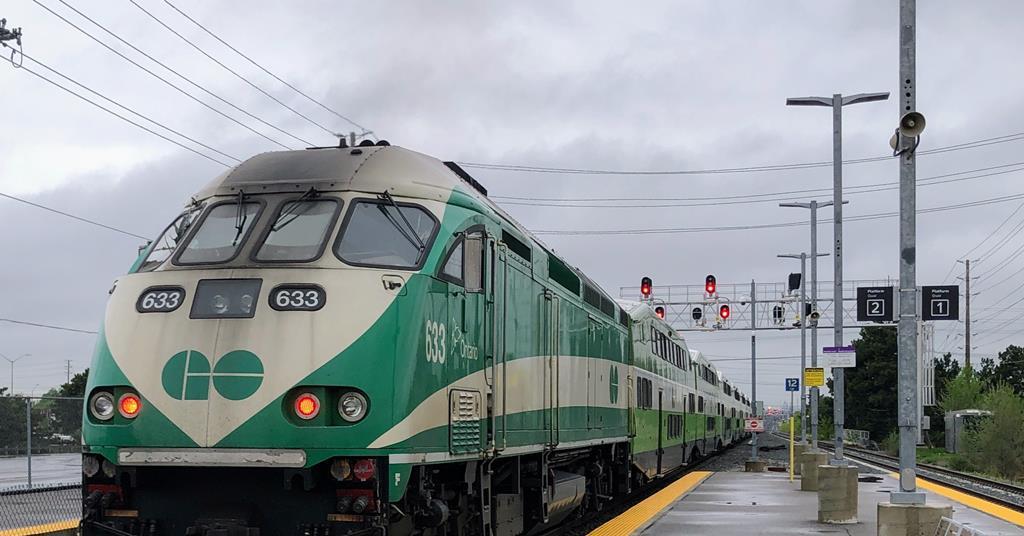pokechimp88
New Member
MP40PH #612 is on a 10 car consist with cab car 316 at the end. 208 is seen here trailing 9th. This consist has been sitting at Willowbrook for a while.
They quietly dropped those a while ago, unless they brought them back again recently, though I haven’t heard anything about it.Actually, they don't. There is a Speed Chart issued to crews ( I have a copy but for certain reasons better if I don't post it) that indicates the top speed to be applied, assuming acceleration at Run 8 from the last station and clear track without turnouts or TSO's. Once they hit the target speed, they are supposed to hold it and not accelerate further, in the interest of fuel conservation. For LSW the highest top speed is only 65 mph wb (Clarkson to Oakville) and 67 mph eb (Clarkson to Port Credit) . For LSE it's max 64 mph wb Whitby to Ajax and 70 mph eb Guildwood to Rouge Hill and Ajax to Whitby. Some are quite low (Guildwood to Eglinton wb 44 mph). Obviously individual crews may go faster on a given day if circumstances require, but in theory the current schedule can be maintained with these low speeds.
- Paul
I thought Will Baird was head of Canadian Railway Observations, but yeah, that sounds like he's an Mx employee.Realize this Facebook group has had some controversy in the past about the owner using other people's pictures without accreditation. The text of the post seems like it was written by a Metrolinx employee and sent to a team. Update: or maybe it was a LinkedIn post.
View attachment 664119
I thought Will Baird was head of Canadian Railway Observations, but yeah, that sounds like he's an Mx employee.
William Baird is a railfan from the Montréal area. He is also a thief. He most certainly is not a Metrolinx or railroad employee, no matter what he tries to pass himself off as.I thought Will Baird was head of Canadian Railway Observations, but yeah, that sounds like he's an Mx employee.
No they’re loading and unloading next to the Skywalk.Are the UPE replacement buses running out of the bus garage? I kind of assumed they'd be using Station Street or something.
That's what I figured. Presumably Station Street.No they’re loading and unloading next to the Skywalk.

Try this link.anyone got a sub to railway gazette?

Canada: GO Transit grapples with fleet uncertainty
Ontario transport authority Metrolinx is adopting an iterative approach to modernising its commuter rail fleet as the scope of the GO Expansion programme continues to evolve. Nick Kingsley reports from Toronto.www.railwaygazette.com




